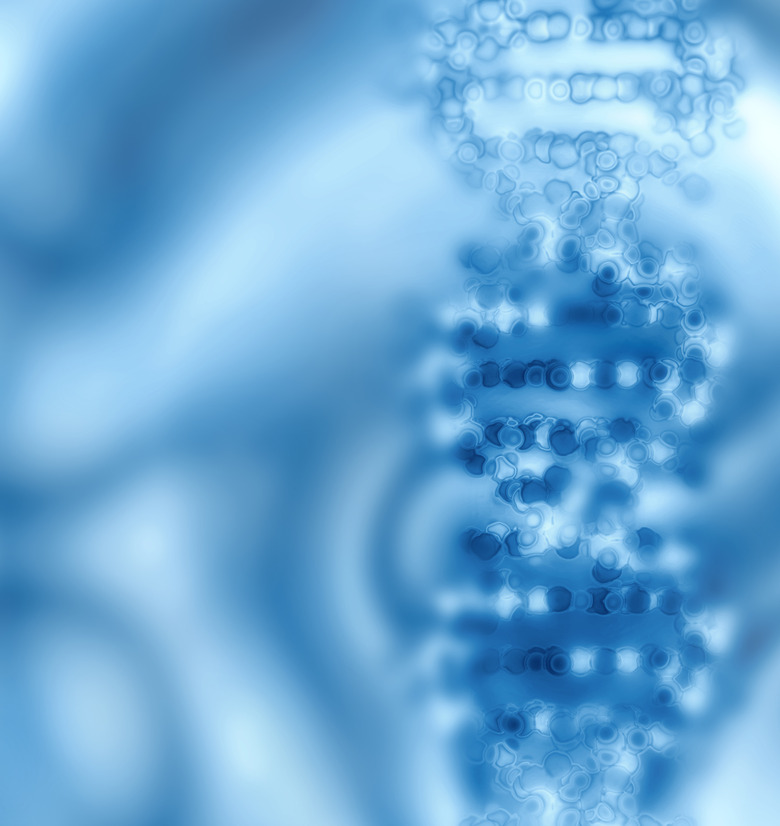What Are The Two Major Functions Of Nucleic Acid In Living Things?
Nucleic acids are tiny bits of matter with large roles to play. Named for their location — the nucleus — these acids carry information that help cells make proteins and replicate their genetic information exactly. Nucleic acid was first identified during the winter of 1868–69. A Swiss doctor, Friedrich Miescher, found a molecule in a cell's nucleus that could not be identified. Even at that early date, Miescher suggested that the substance could be involved in creating new cells and passing along existing traits.
A Three-for-One Deal
A Three-for-One Deal
RNA, ribonucleic acid, is composed of phosphate, a sugar — ribose — and the bases adenine, uracil, cytosine and guanine. Though typically located in the cytoplasm of the cell, RNA is usually produced in the cell's nucleus. Three major types of RNA are found in cells: messenger RNA (mRNA), ribosomal RNA (rRNA) and transfer RNA (tRNA). Managing RNA is an important part of a cell's business. RNA is continually being produced, used, separated into parts and reused.
Pushing Protein
Pushing Protein
The primary job of RNA is to help the cell produce proteins. The mRNA begins the process by carrying the instructions for protein production from the DNA in the nucleus to the ribosomes, organelles in the cytoplasm that make protein. The ribosomes, made up of protein and rRNA, follow those directions. Amino acids are needed to build proteins, and it is the job of tRNA to carry them to the ribosomes so the organelles can finish their job.
Chemical Ladder
Chemical Ladder
DNA, deoxyribonucleic acid, has a twisted ladder or double helix structure. It is composed of phosphate, a sugar — deoxyribose — and four different bases. Three of these are the same as those in RNA: adenine, guanine and cytosine. One base, thymine, is specific to DNA. Most of an organism's DNA is in the cell nucleus. A gene is made up of a small segment of DNA and holds genetic directions about a specific trait. The genes are organized on longer structures called chromosomes.
By the Book
By the Book
Humans have 23 pairs of chromosomes in each cell that provide the blueprints for growth and development. DNA is the "instruction booklet" for the cell, containing the genetic information that each organism received from its parents. The "booklet" stores all the information the cell needs to carry out its functions. Organisms grow and repair themselves by making new cells. In order for this to happen, the DNA replicates itself, so each new cell usually has identical genetic information.
Cite This Article
MLA
Sherwood, Susan. "What Are The Two Major Functions Of Nucleic Acid In Living Things?" sciencing.com, https://www.sciencing.com/two-major-functions-nucleic-acid-living-things-17534/. 24 April 2017.
APA
Sherwood, Susan. (2017, April 24). What Are The Two Major Functions Of Nucleic Acid In Living Things?. sciencing.com. Retrieved from https://www.sciencing.com/two-major-functions-nucleic-acid-living-things-17534/
Chicago
Sherwood, Susan. What Are The Two Major Functions Of Nucleic Acid In Living Things? last modified August 30, 2022. https://www.sciencing.com/two-major-functions-nucleic-acid-living-things-17534/
